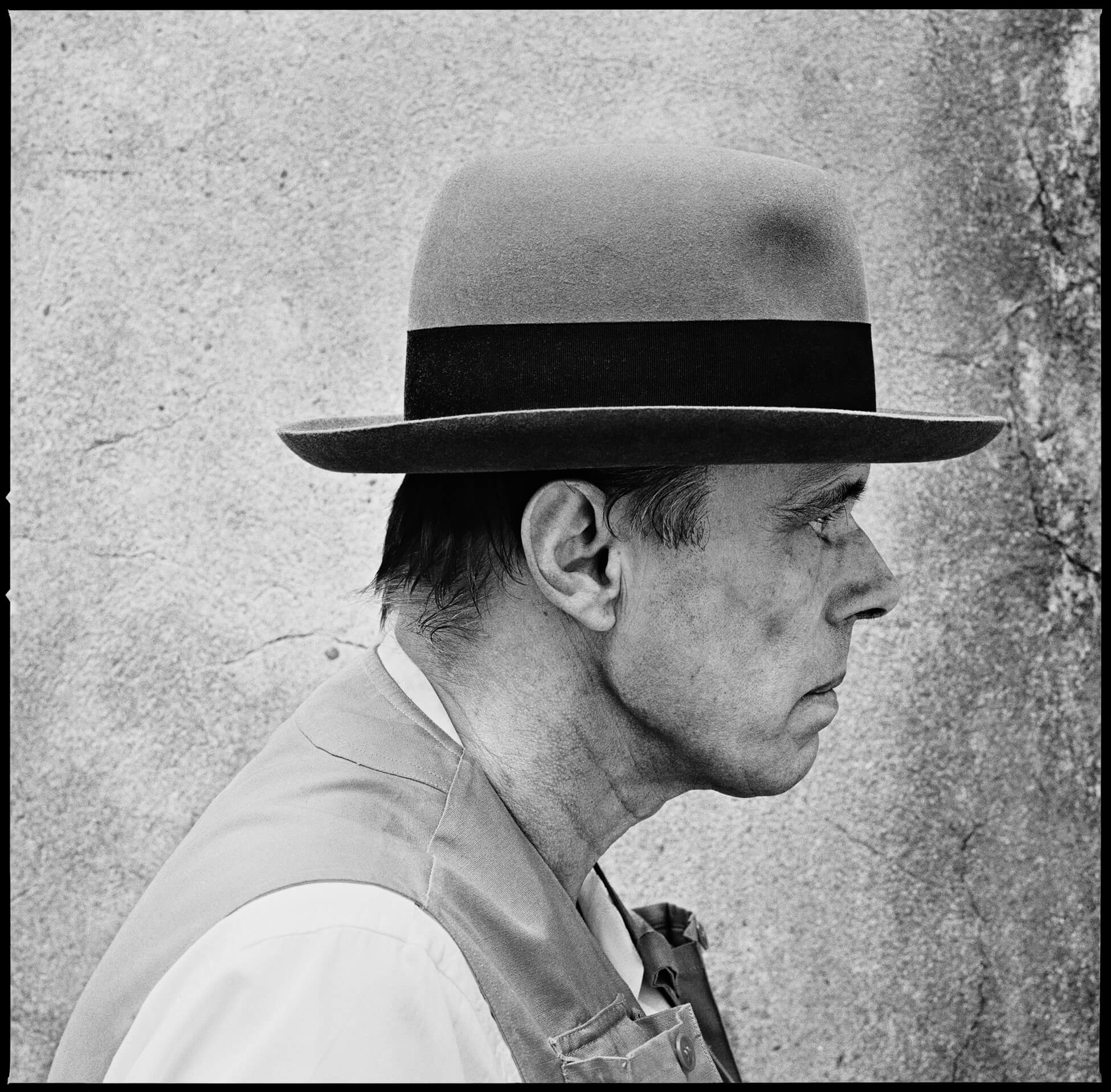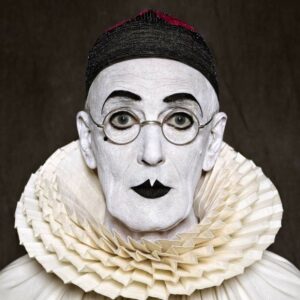Joseph Beuys, 100 Profile Views 1980

Arnaud Maggs, Joseph Beuys, 100 Profile Views (detail), 1980
100 gelatin silver prints, 40.3 x 40.3 cm (each)
Art Gallery of Hamilton
In 1980, Arnaud Maggs sought out prominent German conceptual artist Joseph Beuys (1921–1986) for a portrait project, ultimately creating two grids, one of profiles and another of frontal views. Each work comprises 100 square gelatin silver photographs of the famous artist in front of a textured background. Unmounted and unframed, the prints are secured for installation directly to the gallery wall using squares of Plexiglas and tenterhooks.
In Joseph Beuys, 100 Frontal Views, Maggs captures Beuys from the shoulders up, his emblematic hat atop his head, looking directly at the viewer. In Profile Views, Maggs presents a series of side views of Beuys, his gaze directed to the right. “His strategy,” Maggs explained, “was to somehow defy the camera and make every picture look exactly the same.” Displayed in the order in which they were taken, Maggs’s gridded portraits encourage analytical viewing. We look for moments of disruption and difference in the exhaustive repetition of frames. “Looking very closely and spending some time with [the frontal views],” Maggs asserted, “you see different things in Beuys’s eyes. You see fatigue, you see openness, and you see wariness—you see everything.”
-
Arnaud Maggs, Joseph Beuys, 100 Profile Views, 1980
100 gelatin silver prints, 40.3 x 40.3 cm (each)
Installed at The Power Plant, Toronto, 1999 -
Arnaud Maggs, sketch of Joseph Beuys, 100 Profile Views, c.1980
Ink on paper, 11 x 17 cm
Library and Archives Canada, Ottawa
The portraits of Beuys are significant not just because they convey a noted artist, but also because they underscore duration—a thematic preoccupation that would reappear in Maggs’s work. While shifts from one portrait to the next are very minimal in Profile Views, over the course of the hundred photographs, Beuys’s posture gradually stoops. The sequential, gridded arrangement of the frames moves the work away from the mug shot associations of Maggs’s earlier portraits by exploring the narrative possibilities of the grid format.
Maggs first exhibited the frontal views at Optica gallery in Montreal in 1983. In their original configurations, the Beuys works were arranged in a grid of five rows of twenty images each. Maggs derived the initial hanging scheme directly from 5 x 20 Altstadt Rectangle, 1967, a minimalist metal floor sculpture by American artist Carl Andre (b.1935) that Maggs had seen at Minimal + Conceptual Art aus der Sammlung Panza, an exhibition of the Panza Collection’s minimalist and Conceptual art mounted at the Kunstmuseum Düsseldorf in 1980.
In 1989, when Maggs installed Frontal Views at Stux Gallery in New York City, spatial restrictions prompted an adjustment to the hanging scheme for the work. Still including all one hundred frames, Maggs arranged the work in six rows. The top five rows consisted of seventeen photographs, and the sixth of only fifteen. Maggs left two spaces empty on the right side of the last row. The change to the hanging scheme resulted in compositions that were no longer discrete, closed units. Instead, Maggs shifted the focus from the finite—a time capsule—to the infinite. As he explained, “It sort of says: ‘This can continue.’ It’s open-ended a bit.” The revised scheme changed the artwork’s meaning—albeit subtly—revealing the interpretive potential afforded by the grid arrangement itself.

 About the Author
About the Author
 More Online Art Books
More Online Art Books
 Acknowledgements
Acknowledgements